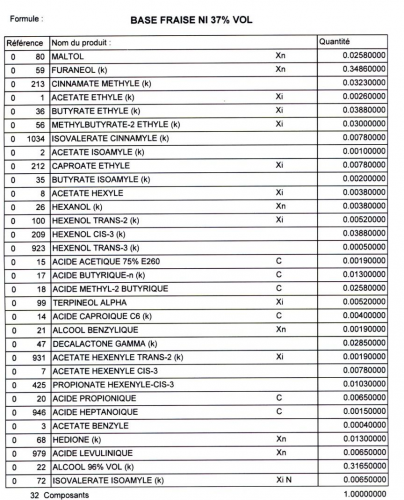
Kaolin Clay: Pigment Extenders
Kaolin clay or most commonly known as ‘China clay’ is a hydrated aluminosilicate Al4Si4O10(OH)8 formed over million years by weathered granite rocks. Learn more about Kaolin Clay in this article!
When it comes to food, flavours are what make the experience truly unforgettable. The right blend of flavours can transform an ordinary meal into a culinary masterpiece. From sweet and savoury to sour and spicy, the range of flavours is never-ending. In this article, let us understand the basics of food flavours and explore the flavour solutions that Maha has for you to create exceptional taste experiences for your customers.
Firstly, let us understand what exactly is a flavour and what do flavours do. A flavour is a mix of flavouring substances with or without solvents and/or carriers. Flavours serve multiple purposes:

There are many reasons for food and beverage manufacturers to use flavours. Industrial processes that require harsh conditions such high pressure and high temperature can cause the loss of flavour, which is compensated by the addition of flavour. Undesirable flavour notes of pharmaceutical ingredients can also be masked by pleasant flavours. While large amounts of raw materials are required to achieve a certain flavour profile, flavours can mimic the profile at tiny dosages, which lowers the cost of recipes. As seasons change, the profile and availability of natural produce change as well, resulting in inconsistencies in flavour of the end product. Flavours are available anytime and anywhere, giving us the same tastes that we remember.
Flavours come in various forms and have different properties, meant to suit a wide range of applications. They are available in liquid form, powder form and emulsions. Oil-soluble liquid flavours are used in applications like fat fillings for biscuits, while their water-soluble counterparts are used in various beverage products. Meanwhile, powder flavours can be used in dry mixes like powder drinks, or in applications where addition of liquid is undesirable. Many flavours are derived from oils, such as citrus flavours. To make them soluble in water, flavours in the form of emulsions are produced.
Besides the application, the choice of flavour formats is affected by their properties. For example, encapsulated powder flavours are protected, making the release of the flavour gradual and longer. Powder flavours are not flammable due to their excipient’s nature, but liquid flavours can be classified as flammable and require more inspection during transportation. On the other hand, due to the processing of powder flavours, they are exposed to high temperatures, pressure and humidity which causes aroma losses. These losses are compensated by increasing dosage. In fact, there are many more aspects to consider when choosing the right format. If you are unsure of what format and properties you need for your flavours, consult our team at Maha for advice from expert flavourists.
So, what exactly does a flavour contain? Simply put, many flavour chemical compounds, along with a solvent, and sometimes juices, extracts, colouring, preservatives etc. Flavour is a complex product. The formula can contain more than 100 ingredients, natural or synthetic, and subtle changes to single ingredients can alter the final product dramatically.
Take the example of banana flavour, which is characterised by the compound isoamyl acetate. With only this compound as the aromatic ingredient, the organoleptic profile of the flavour is the confectionery note. However, when other compounds are added, namely ethyl butyrate, hexanal-trans-2, vanillin and eugenol, the respective flavour notes are added: fruity, green, sweet and ripe, woody. Combining the 5 different aromatic compounds, we get the profile of a “balanced” banana.

However, most flavours are not as straightforward as banana, which has a compound characteristic to its flavour. Many flavours require a combination of numerous aromatic compounds. Let us take a look at the example of a typical strawberry flavour shown below, which is made up of 32 different compounds.

In the formula list, each compound is present in very minute percentages, yet each of them plays a significant role, together providing complexity to the flavour. Furaneol (34.86%) and methyl cinnamate (3.23%) contributes to the jam confectionery note, while ethyl butyrate (3.88%) gives a fruity ether note, and gamma-decalactone (2.85%) gives a fruity milky note. Meanwhile, the ripe note is contributed by methyl butyric acid (2.58%) while the green note is provided by cis-3-hexenol (3.88%) and trans-2-hexenol (0.05%).
With the complexity of flavours, our team at Maha can provide you a customised solution based on your needs, to meet the flavour profile that you are looking for.
Our flavours have a wide range of applications, due to the diversity of formats we can provide.
In this non-exhaustive list are some applications of our flavours:
If you have any special requests for your flavours (heat stable, oil-soluble, Halal, natural etc.), we are here to provide you a customised solution. Simply drop us an email at sales@maha.asia and our representatives will contact you shortly.

Kaolin clay or most commonly known as ‘China clay’ is a hydrated aluminosilicate Al4Si4O10(OH)8 formed over million years by weathered granite rocks. Learn more about Kaolin Clay in this article!

Today, most classical waterborne ink grinds are made in a solution of carboxy-functional grinding resins. And often, a dispersant is needed for viscosity reduction and to improve the color strength.

Starting a new lab is an exciting venture, full of promise, creativity, and new discoveries. It’s also not the easiest thing to accomplish. Considerable deliberation goes into starting a lab, including mountains of paperwork and countless decisions that you need to make. Here are some factors to consider when starting a laboratory that can help it become more productive, efficient, and above all, successful.
Copyright © 2023 Maha Chemicals (Asia) Pte Ltd